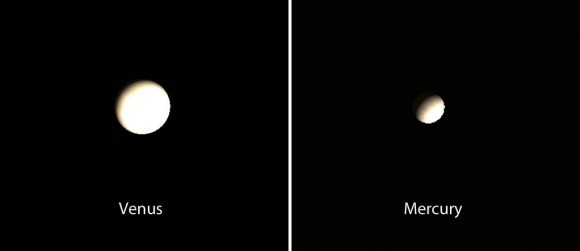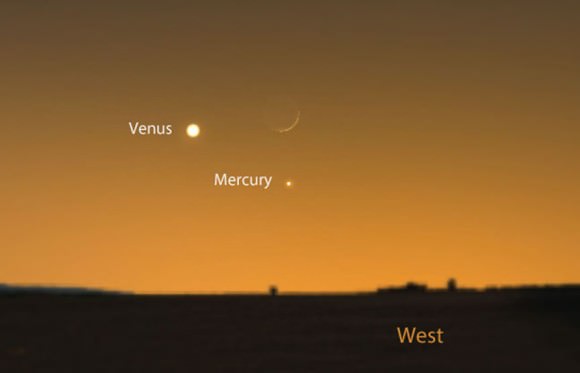As Universe Today’s Dave Dickinson described earlier this week not only has Venus returned to the evening sky, but Mercury has climbed up from the horizon to join it. Last night (Jan. 9th) the two planets were separated by just a hair more than one Moon diameter. The photo only hints at amazingly easy the pair was to see. Consider the duo a tasty hors d’oeuvres before the onset of night and the Comet Lovejoy show.
Tonight the duo will be at their closest and remain near one another for the next week or so. This is one of Mercury’s best apparitions of the year for northern hemisphere skywatchers and well worth donning your winter uniform of coat, boots, hat and thick gloves for a look. Just find a location with a decent view of the southwestern horizon and start looking about a half hour after sunset. Mercury and Venus will be about 10° or one fist held at arm’s length high above the horizon.

Venus will jump right out. Mercury’s a couple magnitudes fainter and lies to the right of the goddess planet. By 45 minutes after sunset, Mercury gets even easier to see. Find your sunset time HERE so you can best plan your outing.

Because both planets are still fairly low in the sky and far away, they present only tiny, blurry gibbous disks in the telescope. Later this spring, Venus will climb higher and show its changing phases more clearly. Keep watch the coming week to catch the ever-shifting positions of Venus and Mercury in the evening sky as each follows the binding arc of its own orbit. The grand finale occurs on January 21st when a skinny crescent Moon joins the duo (Mercury now fading) for a triumphant trio. Has this been an exciting month or what?

